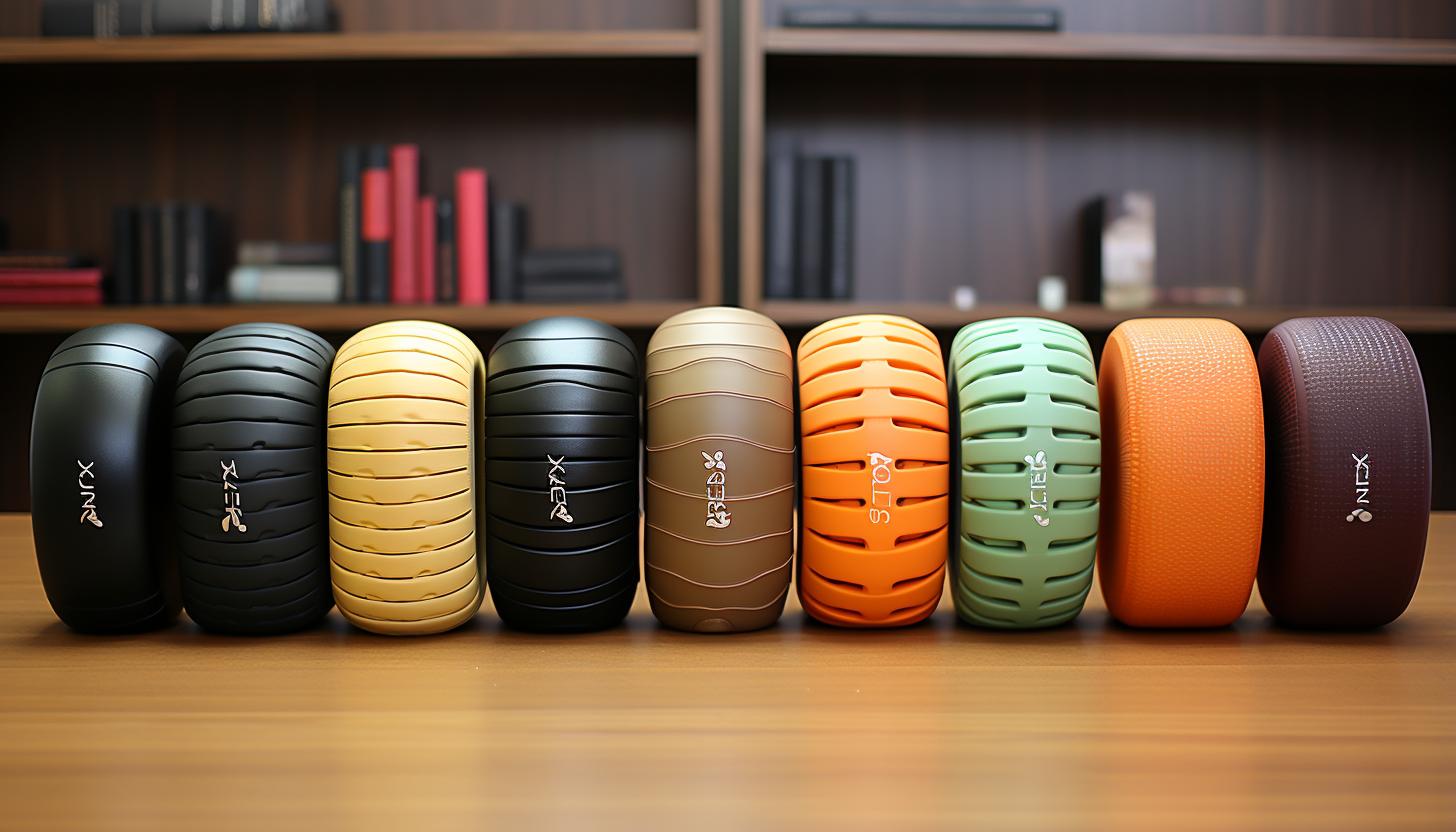Using a Foam Roller for Upper Body Recovery: Tips and Tricks

Looking to give your upper body some much-needed TLC? Well, look no further! This article is here to guide you through the wonderful world of foam rolling for upper body recovery.
With a foam roller in hand, you’ll be able to release tension, improve flexibility, and promote muscle recovery like never before. Say goodbye to those nagging aches and pains as we dive into the tips and tricks that will have you feeling amazing in no time.
So grab your foam roller and let’s get rolling!
Benefits of Foam Rolling for Upper Body Recovery

You’ll be amazed at the benefits you can experience from foam rolling for upper body recovery. Foam rolling is a self-myofascial release technique that involves using a foam roller to apply pressure to different areas of your upper body. This practice has been gaining popularity among athletes and fitness enthusiasts due to its numerous benefits.
One of the key advantages of foam rolling for upper body recovery is its ability to improve flexibility. By targeting tight and restricted muscles, foam rolling helps to increase range of motion and enhance overall flexibility in your upper body. This can be particularly beneficial if you engage in activities that require overhead movements or arm strength.
Additionally, foam rolling can effectively reduce muscle soreness after a workout or intense physical activity. When you roll over specific muscles, it helps to break up adhesions and knots, promoting better blood circulation and reducing inflammation. This not only speeds up the recovery process but also alleviates muscle pain and discomfort.
Incorporating foam rolling into your upper body recovery routine can offer significant benefits such as improved flexibility and reduced muscle soreness. It’s important to remember that consistency is key when it comes to reaping these rewards. So grab a foam roller, dedicate some time to roll out those tight muscles, and experience the amazing benefits for yourself!
Targeted Foam Rolling Techniques for the Upper Body

Get ready to feel the benefits of targeted foam rolling techniques for your upper body! Foam rolling is not just for your legs and back—it can also provide immense relief and recovery for your shoulders and arms.
By incorporating upper body foam rolling techniques into your routine, you can effectively release tension, improve flexibility, and promote better circulation in these areas.
Foam rolling the shoulders is a great way to alleviate tightness and discomfort. Start by lying on your side with the foam roller placed under your shoulder. Using small movements, roll along the length of your shoulder blade, focusing on any areas that feel particularly tight or sore. This technique helps to break up adhesions in the muscles and fascia, promoting increased range of motion and reducing pain.
For the arms, try foam rolling the biceps and triceps. Sit on the floor with a foam roller positioned beneath one arm. Roll from just above the elbow to just below the shoulder joint, applying moderate pressure as needed. This movement helps to release tension in these muscles, improving flexibility and reducing muscle soreness.
Incorporating upper body foam rolling techniques into your recovery routine can have lasting benefits for both your shoulders and arms. Give it a try today and experience firsthand how this simple practice can enhance overall well-being!
How to Choose the Right Foam Roller for Upper Body Recovery

To ensure effective upper body recovery, it’s important to select a foam roller that matches your specific needs and preferences. Here are some factors to consider when choosing the right foam roller:
– Foam roller density comparison: Foam rollers come in different densities, ranging from soft to firm. A softer foam roller provides a gentler massage, while a firmer one offers deeper tissue penetration. Decide on the intensity level you prefer for your upper body recovery.
– Foam roller material options: Foam rollers can be made of various materials like EVA foam, polyethylene, or rubber. Each material has its own benefits and drawbacks. EVA foam is lightweight and durable, while polyethylene is firmer and more long-lasting. Rubber rollers provide extra grip but may have a strong smell initially.
– Size and shape: Consider the size and shape of the foam roller as it should match the areas you intend to target during your upper body recovery routine. A longer roller allows for greater versatility, while a smaller one may be more convenient for travel.
– Texture: Some foam rollers have textured surfaces that mimic the hands-on feel of a massage therapist’s hands. These textures can enhance blood flow and release tension in your muscles.
– Budget: Lastly, consider your budget when purchasing a foam roller as prices can vary depending on brand, quality, and features.
Foam Rolling Routine for Upper Body Muscles

When incorporating a foam rolling routine for your upper body muscles, it’s important to focus on specific areas such as the shoulders, back, and chest. Foam rolling can be highly beneficial for these muscle groups as it helps release tension, improve flexibility, and enhance recovery.
For the shoulders, start by lying on your side with the foam roller positioned under your shoulder. Roll slowly up and down along the muscle fibers, applying gentle pressure. This technique helps alleviate tightness and soreness in the shoulder area.
To target your back muscles, lie face-up with the foam roller beneath your mid-back. Keep your knees bent and feet flat on the floor for stability. Roll up and down along the length of your spine to loosen up tight muscles in this region.
When it comes to foam rolling exercises for the chest, position yourself face-down with the roller placed horizontally across your upper chest. Slowly roll back and forth to relieve tension in this area.
Incorporating these foam rolling techniques into your upper body routine will not only improve flexibility but also aid in muscle recovery after intense workouts or long periods of sitting. Remember to breathe deeply during each exercise and adjust pressure according to your comfort level.
Advanced Foam Rolling Tips and Tricks for Upper Body Recovery

Incorporating these advanced foam rolling techniques into your upper body routine will greatly enhance muscle flexibility and aid in faster recovery. Take your foam rolling game to the next level with these tips and tricks:
– Target specific muscles: Instead of simply rolling back and forth, focus on specific muscles by pausing at tender spots and applying pressure for about 30 seconds.
– Use a lacrosse ball: For hard-to-reach areas like the shoulders or upper back, use a lacrosse ball instead of a foam roller for deeper tissue release.
– Try dynamic movements: Incorporate movement while foam rolling to increase blood flow and promote range of motion. For example, perform arm circles or shoulder rotations while rolling out your biceps.
– Don’t forget about trigger points: Use the foam roller to locate trigger points – tight knots within the muscle – and apply sustained pressure until they release.
– Avoid common mistakes: Be sure to avoid these foam rolling mistakes: rolling too quickly, neglecting painful spots, using poor form, and spending too much time on one area.
By implementing these advanced techniques into your upper body recovery routine, you’ll experience improved flexibility, reduced muscle soreness, and enhanced overall performance. Remember to listen to your body’s cues and adjust the intensity accordingly.
Happy foam rolling!
Conclusion
In conclusion, incorporating foam rolling into your upper body recovery routine can have numerous benefits.
By targeting specific muscles and using the right foam roller, you can alleviate muscle soreness and tightness, improve flexibility, and enhance overall recovery.
Remember to start with basic techniques and gradually progress to more advanced ones for optimal results.
So don’t let those post-workout aches hold you back! Roll out those knots like a pro and give your upper body the TLC it deserves.






